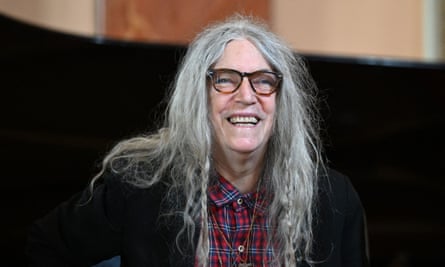Substack – the American tech platform that enables anyone to create, publish, and (if they wish) get paid for a subscription newsletter – has belatedly become the New New Thing in mainstream media (MSM) discourse. It’s actually been around for ever (since 2017, ie 42 internet-years ago) and you could think of it as the continuation of blogging by other means (and indeed, the tradition of conspiracy-theorising is alive and well on Substack). But MSM was never much interested in blogs – possibly because many journalists, like Samuel Johnson, regard anyone who writes for nothing as an imbecile. Substack, though, they can understand, because well-known writers (including a few famous hacks) appear to be earning serious money from it.
Substack is free for authors, operationally reliable and easy to use. If you want to charge subscribers a monthly fee, there’s a simple button to activate it. The financial side is handled by Stripe; Substack takes 10%, and Stripe levies a 3% fee, but after that it’s all yours (and the tax collector’s).
There has been a rash of articles recently about everyone from chefs to journalists giving up their day jobs to earn six figure sums servicing their newsletter audiences. Substack is a trifle coy about numbers. It claims “millions” of readers, but only a million or so are actually paying customers. Anecdotally, the conversion rate from free to paying subscribers is 5-10%.
So what’s motivating them? My own experience suggests that it’s all about engagement. I’ve had a blog for aeons, and when Covid arrived I decided that it might be worth making it also available as a (free) Substack newsletter. In terms of reader response, it was like chalk and cheese. There’s something about the regularity of finding something in your inbox that gets your attention. And that, in the end, is what most writers crave. John Naughton
Books

Story Club with George Saunders
For the past 25 years, Booker prize-winning author George Saunders has been running a writing course for a lucky few students at Syracuse University. Now he’s taken his teaching online, exploring the inner workings of short stories with nearly 100,000 subscribers and responding with characteristic generosity to questions about craft and the writing life. An absolute gem.
Full access: free for a month or so, then £5/month or £40/year.
SJ Watson: Compendia
Bestselling British thriller writer SJ Watson (Before I Go To Sleep) is one of the more inventive literary Substackers. He runs a writer’s workshop where (for a fee) he’ll read and respond to submissions of up to 5,000 words. He’s also serialising a new novel with input from subscribers. A fascinating peek under the literary engine cover.
Full access: £4.49/month or £49/year.
Roxane Gay: The Audacity
“Writing that boldly disregards normal restraints” is the tagline for author and academic Roxane Gay’s newsletter, which has acquired more than 85,000 subscribers since 2021. As well as posting her own ever-acute cultural criticism, she gives a voice to emerging writers and runs a book club devoted to underrepresented American authors.
Full access: £5/month or £48/year.
Profile
Roxane Gay’s The Audacity
Show

Roxane Gay is an American academic and the author of books including Bad Feminist and Hunger. Her Substack newsletter, The Audacity, launched in 2021 and now has more than 85,000 subscribers.
Why did you decide to start a newsletter?
Because Substack invited me to create one. I thought, OK, let me give it a try. I’ve had many blogs over the years and there’s something really nice about that kind of writing that’s not necessarily as formal as something you would publish, but that is still thoughtful and directed towards a specific audience.
What do you cover?
I post essays. I curate an emerging writers series, where every two weeks I publish an essay from a writer who has only published three or fewer things, and they’re paid $2,000 (£1,600). I have a book club. And every week, I do a weekly roundup of interesting or troubling things that I’ve read.
Any downsides?
I think Substack needs to have higher standards in terms of content moderation. There are definitely people on the platform who are espousing ideas that I think are toxic – and that’s not just, oh, we disagree politically. It’s like no, that’s misinformation and dangerous, and. I do think that there should be more rigorous standards about things like that.
What other newsletters do you read?
Hot Dish with Sohla El-Waylly: she’s a really talented chef and I love her newsletter. I also read From the Desk of Alicia Kennedy, which is mostly about the ethics and politics around food. [Comedian] Samantha Irby has a fun newsletter [bitches gotta eat!] that I enjoy. And Introduction by Observer technology columnist John Naughton, picks by Killian Fox Lauren Hough has a great newsletter called Badreads.
Jess White Reads Books
This weekly reading diary is full of considered analysis and excellent book recommendations. Recent reads include A View of the Harbour by Elizabeth Taylor and Soula Emmanuel’s Wild Geese.
Full access: all free, with an option to pledge financial support.
Music

Patti Smith
A pandemic project that’s still going strong, Patti Smith’s intimate newsletter is “thoughtful and eloquent” according to Observer pop critic Kitty Empire. It features videos, shards of music and poetry, a serialised book called The Melting (behind the paywall) and ruminations on whatever’s going through the revered US musician-author’s head on any given week.
Full access: £5/month or £40/year.
Amaya Lim: Record Store
Californian writer-musician Amaya Lim is a compulsive playlist-maker. Her high-school friends were regularly festooned with them and now she’s taken her compulsion to Substack, where she posts 10-track Spotify lists along with artist interviews and reflections on her eclectic mixes.
Full access: £4/month or £40/year to access Currently, where she goes deep on her favourite tracks.
Jeff Tweedy: Starship Casual
Jeff Tweedy is not a musician who shies away from reflecting on his creative process or who puts up barriers between himself and his audience. Here, the prolific Wilco frontman lets fly in every direction, sharing demos, spinning yarns about his years on the road, doling out advice to readers and trying to pin down what makes his favourite songs so great.
Full access: £5/month or £48/year.

Ted Gioia: The Honest Broker
Amid the bedlam of contemporary culture, veteran US jazz writer Ted Gioia is positioning himself as a steady, trustworthy guide – to albums new and old, to the best music videos on YouTube, and to hot-topic issues such as fans throwing things at pop stars.
Full access: £5/month or £40/year.
Film
The Reveal
Veteran movie writer-editors Scott Tobias and Keith Phipps have poured their considerable knowledge into this bustling newsletter. It is jam-packed with film reviews, reappraisals and essays for an audience that’s “just as happy to read about a half-forgotten German drama” as the latest Marvel movie.
Full access: £5/month or £40/year.

Christina Newland: Sisters Under the Mink
Newland, a New Yorker living in the UK, devotes this well-researched newsletter to an intriguing premise: women and crime in cinema, “from serial killers to mob wives and beyond”. Observer film critic Guy Lodge admires Newland’s “sharp, funny writing on women in vintage genre cinema”.
Full access: £5/month or £60/year.
Film Daze
This is a very likable newsletter run by a team of young female writers in the US and Canada. It aims to broadcast “the unheard and underrepresented voices of the film community” while providing sharp, insightful takes on movie matters several times a month.
Full access: £4/month or £40/year.
TV
Episodic Medium
TV recapping is big business these days, with scores of viewers wanting to know exactly what went on in last night’s cliffhanger finale, so it’s unsurprising that there are now newsletters devoted to the practice. This US Substack edited by Myles McNutt (ex-reviewer for the AV Club), with a 10-strong team of eagle-eyed writers, is up there with the best.
Full access: £4/month or £40/year.
Theatre
Fergus Morgan: The Crush Bar
Morgan describes The Crush Bar as a weekly newsletter about emerging theatre-makers but he also provides reviews, previews and opinions on UK theatre. In August he goes on a marathon trawl through the Edinburgh fringe – this year he caught 66 shows in 22 days.
Full access: Free, but with an option to support him to the tune of £5/month or £50/year.

Art & Design
Maxwell Blowfield: Maxwell Museums
If you want to keep abreast of what’s going on in UK museums – and there’s a lot at the moment, with repatriation demands flying around and scandals brewing at the British Museum – this newsletter from a Design Museum PR manager gathers the week’s main stories (international as well as local) into an enjoyably gossipy digest every Friday.
Full access: free.
Alice Zoo: Interloper
Zoo is a UK-based photographer who writes beautifully about her craft. She sends out a post on the first of each month, either an essay (on photographing childhood, say) or an in-depth conversation with a fellow artist. Previous interviewees include Caroline Tompkins and Donavon Smallwood.
Full access: £5/month or £50/year.

A Newsletter from the Desk of Austin Kleon
Since 2013, Kleon, author of Steal Like an Artist, has been sending out a weekly list of 10 things he considers worth sharing, with an emphasis on the arts. His Substack newsletter builds on that template with illustrated essays, video chats and discussion threads for paid subscribers.
Full access: £4/month or £40/year.

Draw Together with Wendy Mac
An offshoot of Wendy MacNaughton’s Draw Together programme, created to keep kids absorbed during lockdown, this newsletter (with 34,000 subscribers and counting) has morphed into a drawing course for grownups as well as tots, featuring interviews, videos, a podcast and more.
Full access: £5/month or £48/year.
Science

Gut Feelings with Professor Tim Spector
An authority on the role of diet in health and wellbeing, Spector is professor of genetic epidemiology at King’s College London and the author of books such as Food for Life. His newsletter, launched in June, is an easily digestible source of information on the latest dietary questions: Does brunching help your mood? Are novel weight-loss drugs your friend or foe?
Full access: £7/month or £70/year.
Hannah Ritchie: Sustainability by Numbers
For anyone feeling crushed by a barrage of bad climate news, here’s a source of clearly presented and often hopeful information on a range of global environmental impacts – deforestation rates, rare-earth mining, dairy v plant-based milks. Ritchie is head of research at the Oxford publication Our World in Data.
Full access: free.
Katelyn Jetelina: Your Local Epidemiologist
This newsletter from a US epidemiologist began as a Covid resource but has broadened out to cover mental and reproductive health and infectious diseases, attracting just shy of 200,000 subscribers. But if you want well-informed takes on the latest Covid developments, this is still the place to go.
Full access: Posts are free but you can pay £4/month or £40/year to access the whole archive.
Tech
LM Sacasas: The Convivial Society
Michael Sacasas is “one of the most penetrating and stimulating critics of digital technology”, according to Nicholas Carr, author of The Shallows. His brainy newsletter, issued most weeks, offers “shamelessly deliberate considerations of the meaning of technology for human experience”. Recent posts have looked at the displacement effect of AI and how digital media affects eye contact.
Full access: £4/month or £36/year.

Ryan Broderick: Garbage Day
US tech writer Broderick somewhat undersells his Webby award-winning newsletter by saying it’s about “having fun online”. Garbage Day does try to extract lols from the internet, but it’s also a smart and prolific (three to four posts a week) dissection of the weird, wonderful and awful aspects of online culture.
Full access: £4/month or £36/year.
Jacqueline Nesi: Techno Sapiens
A newsletter for parents struggling to figure out how much digital content their kids should be allowed to consume. Nesi, a Brown University psychologist (and recent parent), digs into the latest research to provide answers, along with practical tips for living sanely in the digital age.
Full access: Three posts a month are free. For the rest, it’s £8/month or £80/year.
Politics, News & History
Democracy for Sale: Peter Geoghegan’s Substack
Investigative journalist Geoghegan, whose recently launched newsletter borrows the name of his excellent 2020 book, is the person to read if you want to know all about dark money and its corrosive effect on British politics. Stories so far cover Liz Truss’s Growth Commission and the rule breaking of an English cricket legend.
Full access: currently free.

Adam Tooze: Chartbook
Over the past three years, Tooze, a respected and prolific British economic historian at Columbia, has amassed nearly 100,000 subscribers to his newsletter, which publishes daily. It has links to what he’s been reading online and detailed essays on, recently, the rise of the German far right and China’s economic policy. Essential for a better understanding of the global economic picture.
Full access: £4/month or £40/year, though many essays are free to read.
Helen Lewis: The Bluestocking
Since 2015, Lewis, a staff writer at the Atlantic, has been gathering weekly highlights from her wide-ranging online travels – politics, feminism and psychology are recurring interests – and crunching them into digestible form, with article summaries and some typically sharp analysis.
Full access: all free.
Profile
Helen Lewis’s The Bluestocking
Show

Helen Lewis, a British political journalist and author, started The Bluestocking in 2015 on the TinyLetter platform, changing over to Substack in May 2020. She now has about 15,300 subscribers.
What’s the appeal of a newsletter for you?
Back in the 2000s, I used to blog. Then Twitter killed off the blog for a while because everyone thought, why do I need to write 800 words when I could just send a tweet? But then Twitter became a horrible bear pit and people have trended back towards the idea of writing for an audience that you can curate. The quality of engagement [through the newsletter] is so much higher than I’ve ever had on social media.
Describe The Bluestocking.
I started it because I was reading so many articles for my job, to find story ideas and context. I thought, well, if I’m reading all this stuff, why don’t I tell people what out there is good? So usually I have two chunky quotes from articles, with some discussion afterwards and then some quick links. I also use it to promote my own work.
Any downsides?
It’s a time commitment, it takes me a good couple of hours a week to do it. The other downside, particularly of the Substack model, is that it does reward screamy culture-war takes, because they are quicker to write and hugely popular.
What other newsletters do you read?
Invisible Woman by Caroline Criado Perez is very good if you’re interested in feminism. Comment is Freed by Sam and Lawrence Freedman, for discussion of the Ukraine war or British domestic policy. James O’Malley’s Odds and Ends of History is good for niche, nerdy politics.
Heather Cox Richardson: Letters from an American
The most popular paid newsletter on Substack, with more than 1.2 million subscribers who come for a measured perspective on today’s US politics through the lens of the past. Richardson is professor of history at Boston College and she posts daily on subjects such as white supremacist violence and America’s troubled relationship with China.
Full access: all posts are free, £4/month or £40/year for access to the comments.

The Mill
The saviour of local journalism in the UK might just be a humble newsletter that launched in Manchester only three years ago and is now preparing to expand across the country with backing from investors including former BBC head Mark Thompson. The Mill, founded by Joshi Herrmann, covers everything from homelessness to restaurant-industry bullying in gratifying depth for an audience of 36,000 and counting. Separately, former journalist Michael MacLeod recently quit his job at Meta to focus on expanding the subscriber list for the Edinburgh Minute, his daily roundup of news from the city.
Full access: £7/month or £70/year; £5/month or £45/year
Food
Vittles
Launched at the start of lockdown by food writer Jonathan Nunn (later joined by co-editors Rebecca May Johnson, Sharanya Deepak and Adam Coghlan), this thriving newsletter champions new voices outside the established food media, paying better than most of its mainstream counterparts. Highlights from its first six “seasons” include an analysis of the British obsession with food factories, an ode to the complicated joys of Guinness, and an exhaustive guide to London ice-cream vendors, venturing well beyond zones 1 and 2.
Full access: £5/month or £45/year.
Profile
Jonathan Nunn’s Vittles
Show

Jonathan Nunn launched the food newsletter Vittles in March 2020, attracting a wide range of contributors. It now has more than 48,000 subscribers and employs three other part-time editors.
Why did you decide to start a newsletter?
It was the easiest type of publication to launch without any start-up money, or a plan of what was going to happen. The idea initially was to get chefs and food writers who were out of work [during lockdown] to write for us, and make sure they got paid. As furlough came in, it evolved to become for anyone who felt that they were shut out of food writing in the UK, or never had the opportunity to write because they were working all the time.
How has it evolved?
The big change recently is that we started doing restaurant reviews. And as different editors have come on board, they bring their own sensibilities and tastes. Also our rates have increased: we’ve gone from paying writers £10 to £800 a newsletter.
How else do newsletters differ from other formats?
There’s the fact that it’s in your emails every day, which is good and bad; it means that people don’t forget you exist, but anything in your inbox is associated with stress. The other thing is that newsletters are easier to monetise than blogs were. If you look at food blogs in 2010, none of them made any money but the writers did get book deals or move into recipe testing. Whereas newsletters you can monetise fairly quickly to pay your rent or quit your job or pay other writers.
How many paid subscribers do you have?
I don’t like to say, but Substack normally says about 10% of people end up transitioning from free to paid subscription.
What other newsletters do you read?Drew Austin’s newsletter on urbanism, Kneeling Bus. Huw Lemmey’s newsletter Utopian Drivel, which can be about anything. In terms of food, Molly Pepper Steemson’s newsletter Very Short works with the format very well, in that she just posts 100-word stories every day. I think that’s an ideal length.

Nicola Lamb: Kitchen Projects
This is an incredible resource that doesn’t just provide recipes for a variety of dishes (mostly sweet things and baked goods) but goes deep into how they’re created and the science behind each step. Lamb, a London-based recipe tester, calls on the expertise of bakers, ice-cream makers and patissiers from around the world. She’s an excellent writer to boot.
Full access: £5/month or £50/year.
Lifestyle

Emma Gannon: The Hyphen
Bestselling author Gannon (The Success Myth) recently posted about how she makes a six-figure income on Substack – her newsletter has more than 27,000 subscribers. She writes in clear, grabby prose about wellbeing, creativity and literature, among other things, with plenty of reader engagement, and book and podcast recommendations each week.
Full access: £6.99/month or £69/year to access the vast majority of the newsletter.

Rosamund Dean: Well Well Well
In this entertaining, down-to-earth newsletter, Dean, who has written books on mindful drinking and surviving breast cancer, shares wellness tips “without turning into a joyless bore”. Lately, she’s been musing on Gary Neville’s “mini retirement” concept and advocating for the power of a good cry.
Full access: £4/month or £40/year.
Blackbird Spyplane You’ll either really love this ultra-hip style newsletter from California, with its rickety Photoshop aesthetic, insidery lingo and weird obsession with fighter jets, or you really won’t, but its influence and predictive abilities are hard to argue with. And they get some great interviewees, including Tyler, the Creator, Lorde and Jerry Seinfeld.
Full access: £4/month or £40/year.
